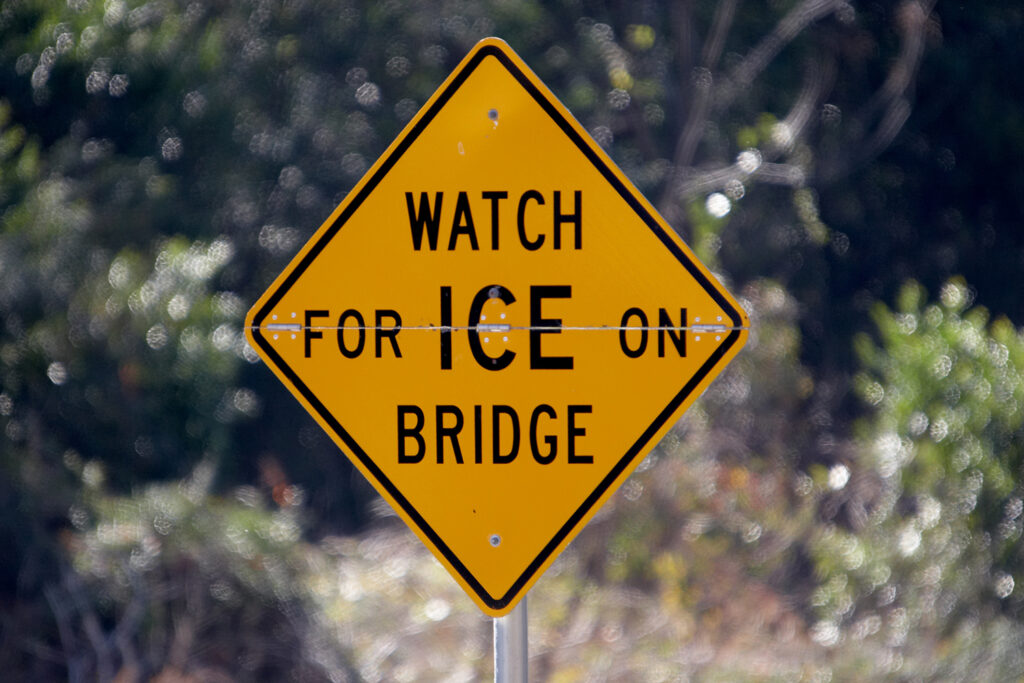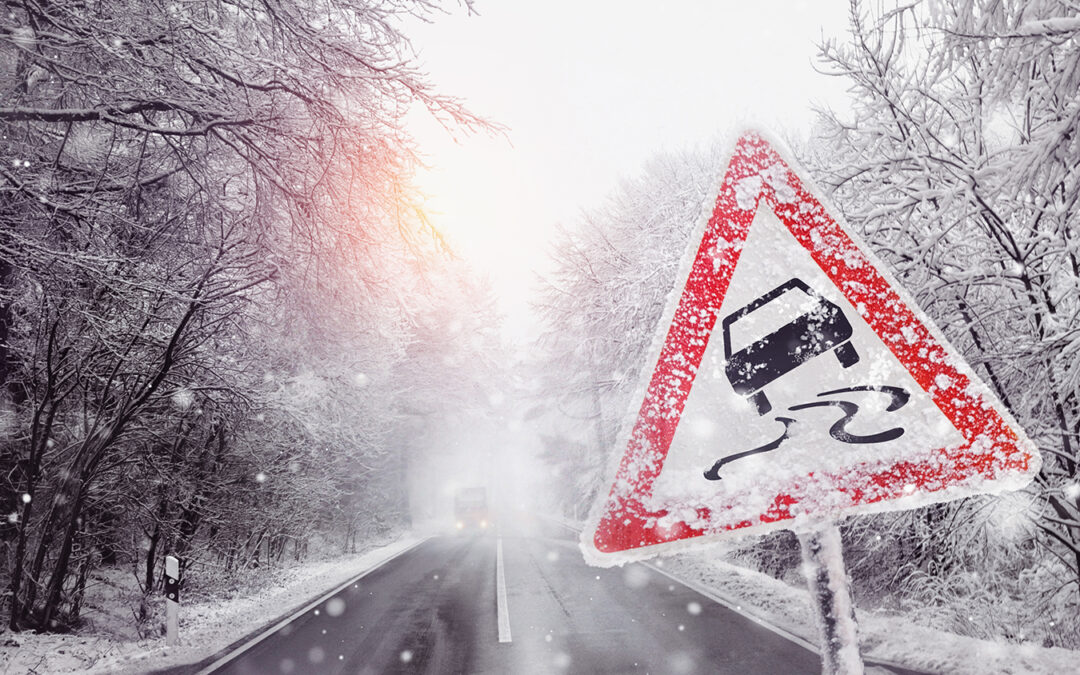From late November to March, one of the biggest culprits of automobile accidents that we see come into our shop is due to black ice. While the name alone lends it plenty of notoriety, we’re here to say that black ice should be treated with seriousness; it causes many accidents in New England and all across the United States every winter.
However, with that notoriety comes an almost legendary status, so much so that many people completely misunderstand black ice as well as how to deal with it. We thought we’d dispel the uncertainty and cut to the chase when it comes to black ice and how to drive on it.
What is Black Ice?
You might be surprised that black ice isn’t black, nor is it any different from regular old ice. Black ice is simply a term for any ice that might form in surprising areas or be hidden in plain sight. The scary thing about black ice is that you might be cruising along without a care in the world until you hit a patch of it and suddenly find your vehicle fishtailing, swerving, or spinning. To put it simply, black ice is regular ice that is simply unexpected.
Where & When Does Black Ice Form?
Where does black ice form? While we can’t account for every inch of highway or road, we can certainly tell you where to expect black ice. Typically, black ice will form in shadows, even on days when the rest of the road has thawed out. Black ice also loves to form on the surfaces of bridges, where the shallow surface and cold water work together to keep the surface frozen far after the rest of the roadways have warmed up.
When does black ice form? It can happen at any time. It’s safe to say that, if it’s winter, then black ice is around. Even on a 40+ degree day, with the rest of the snow and ice completely melted, black ice may still exist in the shadows on the road where surface temperatures are still below freezing. Yes, you heard that right; in the wintertime, regardless of how warm the air feels, a shadow can still plunge a surface’s temperature down to freezing conditions. Bridges are a concern as well for the same reason.

How to Drive on Black Ice
If you drive cautiously and defensively in the winter (as you should year-round), then you’re already equipped to deal with black ice. However, if it takes you by surprise and you find yourself losing control of your vehicle due to black ice, then we have a few simple tips to minimize the impact:
- Avoid your brake – applying your brake is the worst thing you can do in this situation. Your brakes will cause you to lose even more control of your vehicle and even cause you to spin. As much as your first reaction is to brake, avoid the urge.
- Ease off the accelerator – instead of breaking, ease off of your accelerator. Your car will naturally slow down, which is the best way to come to a stop on black ice. Plus, the slower your car goes, the more control you’ll get back and the less damage you’ll do if you impact something.
- Focus on keeping your wheel straight – don’t twist and turn your wheel even if you feel the urge to panic. Instead, slowly guide the wheel so it’s pointed straight. At the moment, your vehicle is essentially ice skating, so it’s up to you to cautiously control its trajectory.
- Steer towards texture – your tires need to find purchase; something to dig their treads into. Try and steer towards a sandy or textured surface, even snow. The sooner you get off the ice, the sooner you’ll regain control of your vehicle.
- Remain calm – most of all, remain calm. Skidding and sliding are a part of winter driving. Let your vehicle go a bit and resist the urge to overcorrect. Soon enough, you’ll be back on solid terrain and you’ll regain control.
Were you involved in a winter accident? Don’t fret; we’re autobody experts in New England and here to help. Reach out to us today to schedule an appointment.


Recent Comments